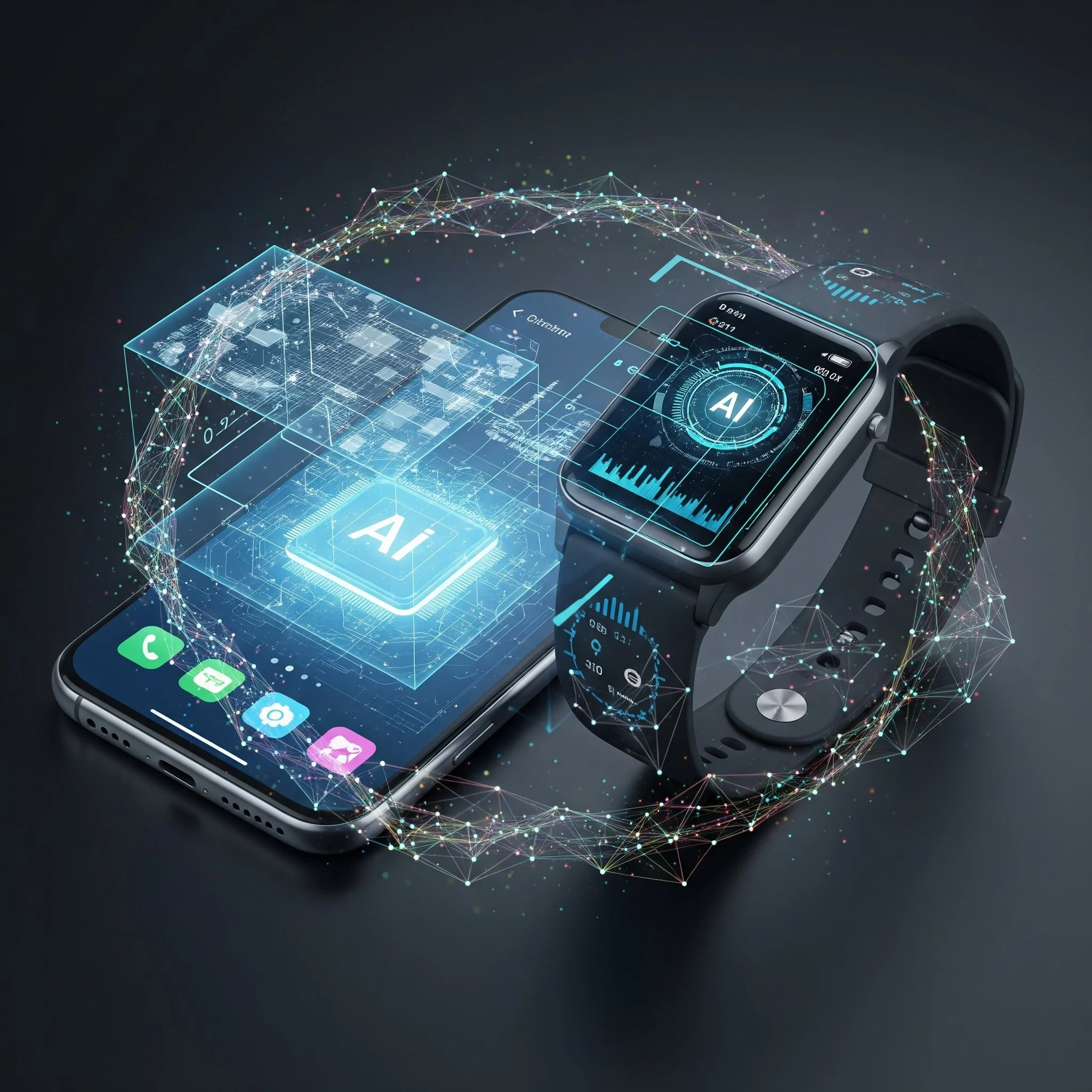AI in Your Pocket: The Evolution of On-Device AI in Smartphones and Wearables
Just a few years ago, artificial intelligence was a buzzword mostly reserved for cloud computing, data centers, and enterprise applications. Fast forward to today, and AI is literally in your pocket—or on your wrist. From personalized recommendations to real-time health monitoring, on-device AI has become one of the most transformative forces in the mobile and wearable tech ecosystem.
The Shift: From Cloud to Edge
Traditionally, AI-powered features relied heavily on the cloud. Voice assistants like Siri and Google Assistant would send your voice input to distant servers, process it, and return results in a matter of seconds. But this process posed problems: privacy concerns, lag, and reliance on internet connectivity.
Enter on-device AI—a paradigm shift in which models run locally on smartphones, smartwatches, earbuds, and even AR glasses. This edge computing approach not only reduces latency but also enhances security and energy efficiency.
What’s Powering On-Device AI?
Several breakthroughs have made on-device AI possible:
Dedicated AI Chips: From Apple’s Neural Engine to Google’s Tensor SoC and Qualcomm’s Hexagon DSP, mobile chipmakers have built custom silicon to handle AI workloads efficiently.
Model Optimization: Lightweight architectures like MobileNet, quantization techniques, and pruning have allowed complex models to fit and function within the constraints of portable hardware.
Federated Learning: This technique enables AI models to learn and improve on-device without sharing raw data, further protecting user privacy.
Everyday Examples of On-Device AI
On-device AI isn't just a technical achievement—it’s improving user experience in visible, tangible ways:
Photography: Smartphone cameras now use AI to detect scenes, optimize lighting, and apply effects in real time—all without needing the cloud.
Voice Assistants: Modern assistants can perform basic commands (like setting reminders or toggling Wi-Fi) offline, thanks to local processing.
Wearables: Smartwatches analyze your heartbeat variability, sleep stages, and even detect falls using AI models running directly on the device.
AR & Translation: Real-time language translation and augmented reality overlays (like Live View in Google Maps) are powered by AI models that run on-device for faster response and reduced bandwidth usage.
The Benefits of Going Local
Privacy: Your data stays on your device, reducing the risk of breaches and improving user trust.
Speed: Without round-trip communication to the cloud, AI responses are faster and more seamless.
Offline Functionality: Many AI features now work without an internet connection—perfect for travel or remote areas.
Energy Efficiency: Specialized AI chips are optimized to perform tasks using minimal power, extending battery life.
Challenges and Limitations
Despite its promise, on-device AI comes with challenges:
Limited Resources: Devices have constraints in terms of power, memory, and processing, limiting the complexity of models.
Model Updates: Keeping AI models up-to-date without consuming too much bandwidth or storage is still an area of active research.
Ecosystem Fragmentation: The diversity in hardware and software platforms makes developing consistent AI experiences across devices difficult.
The Road Ahead: Smarter, Smaller, Seamless
The future of on-device AI looks incredibly promising. As hardware becomes more capable and AI models become more efficient, we can expect:
Personalized AI models that learn uniquely from your behavior and adapt in real-time
Greater integration with health and wellness, enabling proactive health interventions
Smarter wearables that anticipate needs before you even ask
AI that works cooperatively across devices in your ecosystem for seamless experiences
On-device AI is no longer a futuristic concept—it’s here, quietly transforming how we interact with technology every day. As smartphones and wearables grow smarter, faster, and more private, AI is becoming an invisible but indispensable assistant always within reach.
Your pocket is now smarter than ever—and it's only the beginning.

